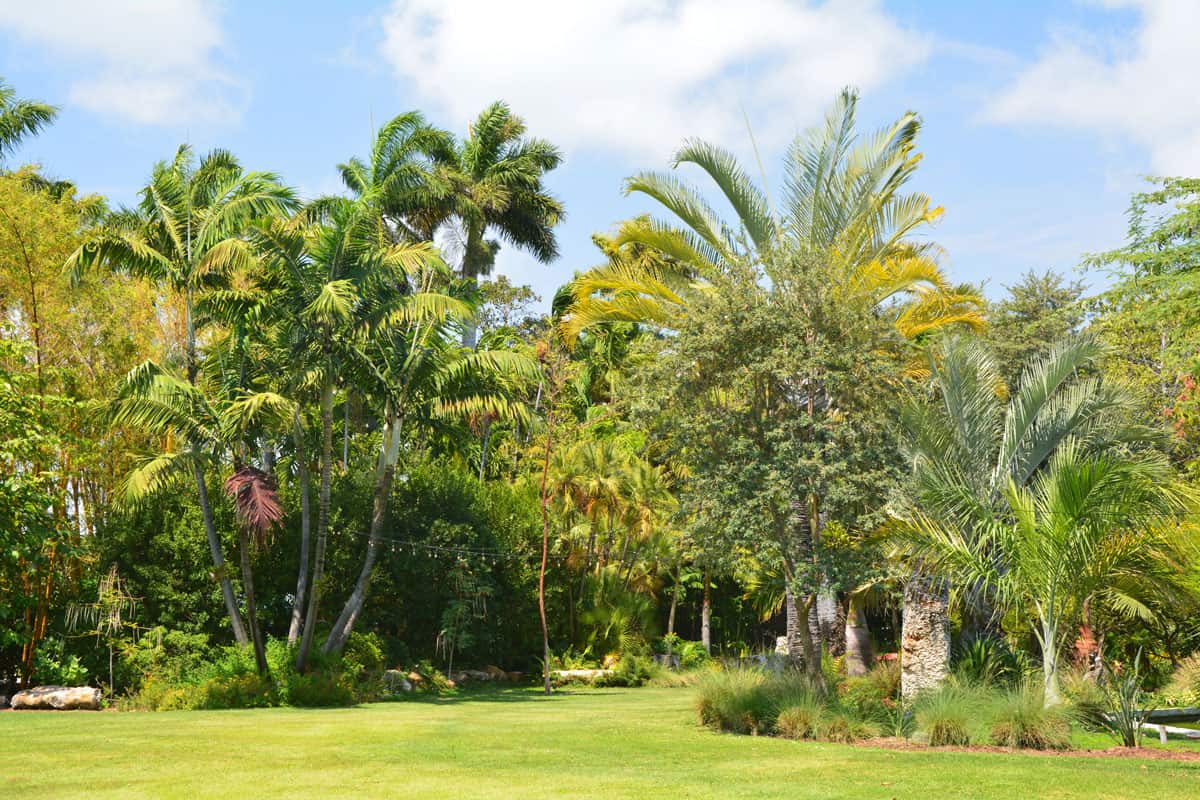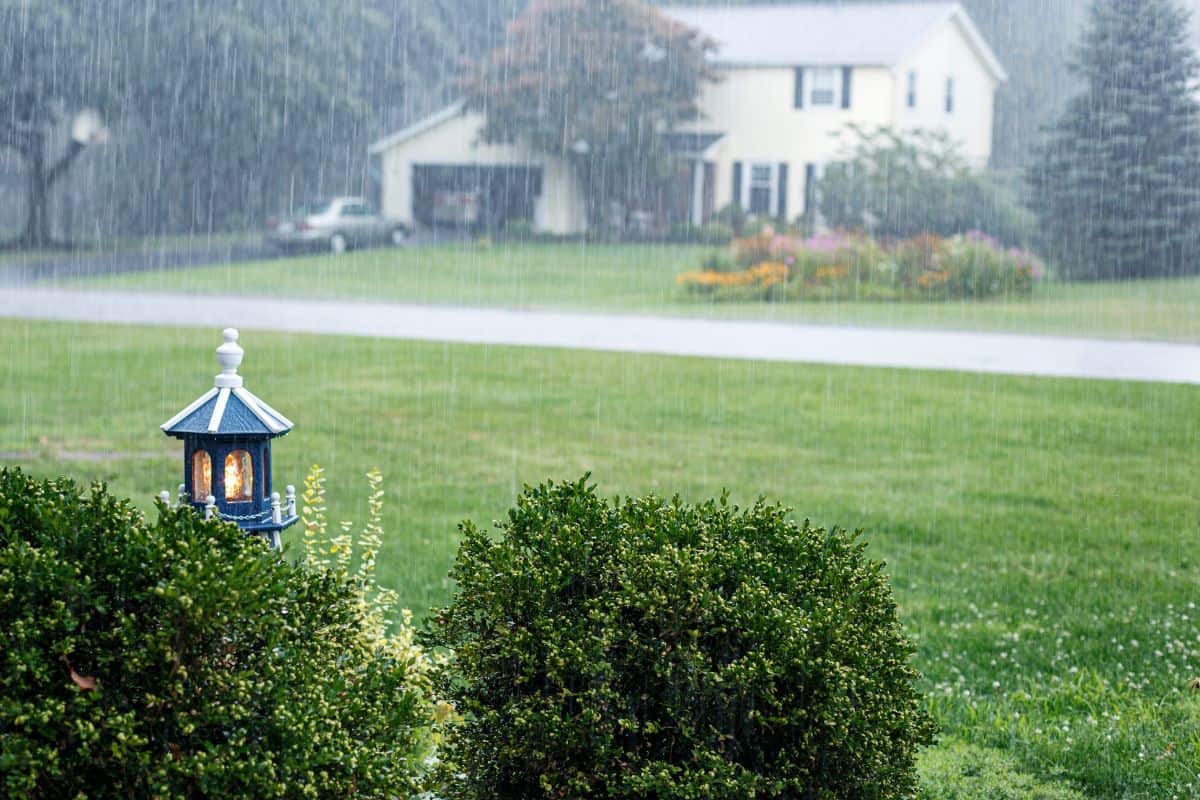Tropical gardening in Zone 12 comes with its own set of unique challenges and rewards.
With a year-round growing season and an abundance of sunlight, you have the opportunity to create a lush, vibrant landscape filled with a variety of exotic plants.

However, successfully navigating this tropical paradise requires an understanding of the climate, soil, and plant species that thrive in this environment.
Understanding Zone 12 Climate
As a gardener in Zone 12, you'll need to pay close attention to the moisture levels in your garden.
The tropical climate means high temperatures and humidity, which can lead to increased evaporation and the need for consistent watering.

Balancing your garden's moisture levels is crucial for avoiding common issues like fungal growth and root rot.
Another important aspect of tropical gardening in Zone 12 is understanding the unique soil composition found in this region.
Often high in clay and low in nutrients, the soil might require amendments and proper drainage to support the growth of your chosen plants.
With a thoughtful approach to these challenges, your tropical garden will flourish, providing you with a vibrant, verdant retreat to enjoy year-round.
Climate Characteristics
In Zone 12, you'll experience a truly tropical climate with high temperatures and humidity levels throughout the year.
The average temperature stays consistent, rarely dipping below 60°F even at night.

This warmth, combined with ample rainfall, creates an ideal environment for a wide variety of tropical plants to thrive.
However, it also means dealing with potential pests and diseases that thrive in those conditions too.
Keep in mind that shade and moisture management will play a significant role in your gardening success.
Seasonal Variations
As a tropical gardener, you'll notice that seasonal variations in Zone 12 are quite different from what you might expect in temperate regions.
Instead of the typical four seasons, you'll mainly experience two: a wet season and a dry season.
Wet Season
The wet season often starts in late spring and can extend into fall. Rainfall is more abundant during this period, which helps your tropical plants grow.
However, you might need to adjust your garden’s irrigation system to prevent overwatering or waterlogging.
Some techniques you could consider are the use of raised beds, proper soil amendments, and adequate plant spacing.

Dry Season
The dry season typically lasts from late fall to early spring. During this phase, make sure you maintain a balanced watering schedule and monitor the moisture content of your soil.
Many tropical plants are sensitive to a lack of water, and you want them to remain healthy and vibrant.
Soil Considerations for Tropical Gardens
One of the essential aspects of successful tropical gardening is understanding and addressing soil considerations.
Soil Types
There are various soil types in tropical regions, each with its unique properties. Some of the common soil types in Zone 12 include:
- Loam: This well-balanced soil type is ideal for tropical gardening due to its high fertility and ability to hold water. Loam is comprised of equal parts clay, sand, and silt.
- Clay: Rich in nutrients, clay soil can be great for certain plants. However, it's essential to ensure proper drainage, as clay can become compacted, making it challenging for water and air to penetrate.
- Sandy: Sandy soils are quick-draining, which can lead to nutrient leaching. While it's easier to till, you'll need to address its low fertility and moisture retention properties for a thriving garden.

Improving Soil Quality
To improve soil quality in your tropical garden, consider the following steps:
1. Test Your Soil
Perform a soil test to determine the pH, nutrient levels, and possible contaminants in your garden. This information will help you make informed decisions about amendments and which plants will thrive best.
Check out this multi-purpose soil moisture meter on Amazon.
2. Amend With Organic Matter
Adding compost can significantly improve your soil's structure, fertility, and water-holding capacity. Spread a 1-inch layer around your plants and work it in lightly.

3. Use Mulch
Apply a layer of organic mulch, like wood chips, leaves, or straw, around your plants to help maintain moisture levels, suppress weeds, and regulate soil temperature.

4. Practice Proper Watering Techniques
Tropical plants typically require consistent moisture. Water deeply and less frequently, allowing the soil to dry out slightly between waterings to encourage robust root growth.

5. Rotate Crops
If you're growing edible plants, rotate crops to prevent nutrient depletion and avoid the build-up of pests and diseases.
Choosing the Right Plant Species
Let's explore the benefits of both native and exotic plants and how to make smart choices catered to your specific gardening needs.
Native Plants
Native plants are well-adapted to the local climate and soil conditions, making them more resistant to pests and diseases.

Moreover, they require less maintenance, typically helping you save on both time and water expenses.
Some popular native plants to consider for your Zone 12 garden are:
- Sea grape (Coccoloba uvifera): A salt-tolerant shrub, excellent for coastal landscapes.
- Firebush (Hamelia patens): Attracts butterflies and hummingbirds, with its vibrant red-orange blooms.
- Swamp lily (Crinum americanum): Thrives in moist conditions and features delicate white flowers.
Exotic Plants
Despite the challenges of adapting to new environments, many thrive in Zone 12 due to its favorable weather conditions.

However, be cautious when choosing exotic species, as some can become invasive and harm local ecosystems.
Here are a few exotic plants that are suitable for Zone 12:
- Frangipani (Plumeria spp.): Offers stunning, fragrant flowers while requiring minimal effort to maintain.
- Bougainvillea (Bougainvillea spp.): A sprawling vine with vibrant, showy-colored bracts, perfect for fences and trellises.
- Bird of Paradise (Strelitzia reginae): Adds a dramatic touch with its unique, colorful blooms that resemble tropical birds.
Check out more plant options in these links:
The 17 Best Plants to Grow in Zone 12b (55 to 60 °F/12.8 to 15.6 °C)
The 17 Best Plants to Grow in Zone 12a (50 to 55 °F/10 to 12.8 °C)
Watering and Irrigation Techniques
In this section, we will discuss water conservation and effective irrigation systems to help you maintain a thriving garden in this unique zone.
Water Conservation
Water is a precious resource, especially in tropical environments. To make the most out of your watering efforts, try the following techniques:
1. Mulching
Applying a 2-3-inch layer of mulch around your plants can help retain soil moisture and reduce evaporation. Remember to keep mulch at least 6 inches away from perennials and 12 inches from tree trunks to prevent pathogens.

2. Watering Early or Late
Water your plants during the early morning or late evening hours to reduce evaporation losses.
3. Targeted Watering
Focus on watering the root zones of your plants rather than spraying water over the foliage. This method helps to conserve water and reduces the risk of diseases.
Effective Irrigation Systems
Choosing the right irrigation system can make a significant difference in the health and productivity of your tropical garden.

Here are some options:
1. Drip Irrigation
This system delivers water directly to the root zones of your plants through a network of hoses and emitters. It is highly efficient and can save water by minimizing evaporation.

2. Soaker Hoses
These porous hoses allow water to seep into the soil slowly, ensuring even and deep watering.

Soaker hoses are an excellent choice for your larger plants, such as trees and shrubs, allowing the soil to dry out partially before the next watering session as recommended by WSU Extension.
3. Rainwater Harvesting
Collecting rainwater in barrels or other storage containers can provide a sustainable and eco-friendly source of irrigation for your garden.
Pest and Disease Management
Let's learn about common pests and organic pest control methods to help you maintain a healthy, productive garden.

Common Pests
In Zone 12, you may encounter a variety of pests that can damage your plants. Some common pests include:
- Aphids: Small, soft-bodied insects that feed on plant sap and can cause wilting, yellowing, and stunted growth. They may also transmit plant viruses.
- Spider mites: These tiny pests can cause significant damage by feeding on plant leaves, leading to stippling or bronzing of the foliage. In severe infestations, plants may become defoliated.
- Whiteflies: Similar to aphids, whiteflies also feed on plant sap and can cause similar damage to your plants. They may produce a sticky honeydew substance that encourages the growth of sooty mold.
- Mealybugs: These pests are covered in a waxy, white coating and will feed on plant sap, leading to distorted and yellowing leaves.
Organic Pest Control
For a more environmentally friendly approach to pest management, consider using organic pest control methods. Here are some strategies you can try:

1. Cultural Controls
Maintain healthy plants by providing proper nutrition, water, and sunlight. Healthy plants are more resistant to pest infestations.
2. Physical Controls
Remove pests by hand or use barriers such as sticky traps to catch flying insects like whiteflies and prevent them from reaching your plants.
3. Biological Controls
Introduce beneficial insects, such as ladybugs and lacewings, which are natural predators to pests like aphids and mealybugs.
4. Organic Insecticides
In case of a severe infestation, use organic insecticides like neem oil, insecticidal soap, or horticultural oil.
These products have a low impact on the environment and are less harmful to beneficial insects.
Dealing with Extreme Weather Events

Storm Preparation
In tropical gardening, especially in Zone 12, it's essential to be prepared for extreme weather events such as storms and hurricanes.
To protect your garden, consider the following measures:
1. Choose Resilient Plants
Opt for native plants or varieties that are known for their ability to withstand harsh conditions, like strong winds and heavy rainfall.
2. Prune Regularly
Keep your trees and shrubs in good shape by pruning them regularly. This will minimize the chances of broken branches and other damages during storms.
3. Secure Structures
Check your garden for any structures, such as trellises, pergolas, or raised beds, that might need reinforcement to withstand strong winds.
What Are the Ideal Watering Practices for a Zone 12 Garden?
It's essential to water your plants early in the morning. This allows the water to reach the roots and be absorbed before the intense heat of the day causes evaporation.

Aim to finish watering by 9 A.M. Conversely, watering late in the evening risks promoting disease due to the damp, overnight conditions.
Water deeply, letting the soil dry out partially before the next watering session. For zone 12, plants like large trees and shrubs may need the soil to dry out several inches down before re-watering.
Finally, don't forget to group plants with similar watering needs together. This makes it easier for you to manage their water needs and ensure each plant gets the right amount of moisture it requires.
Conquering Zone 12 Gardening Challenges
Embrace the many plant options you have available in Zone 12. From exotic fruit trees to unique perennials, the warmer climate gives you the ability to experiment and discover new favorites to include in your tropical haven.
Use companion planting principles to provide beneficial interactions between different species, boosting their resilience against pests and diseases.
Lastly, be prepared for potential extreme weather events such as tropical storms and hurricanes.
By applying these guidelines and maintaining a friendly and dedicated approach, you will overcome the challenges in Zone 12 and build a captivating and thriving tropical garden to be proud of.
For more gardening tips on warm climates, check out these other articles:
10 Thriving Desert Plants for Your Zone 12 Landscape
How to Care for Your Garden in the Constant Warmth of Zone 11

